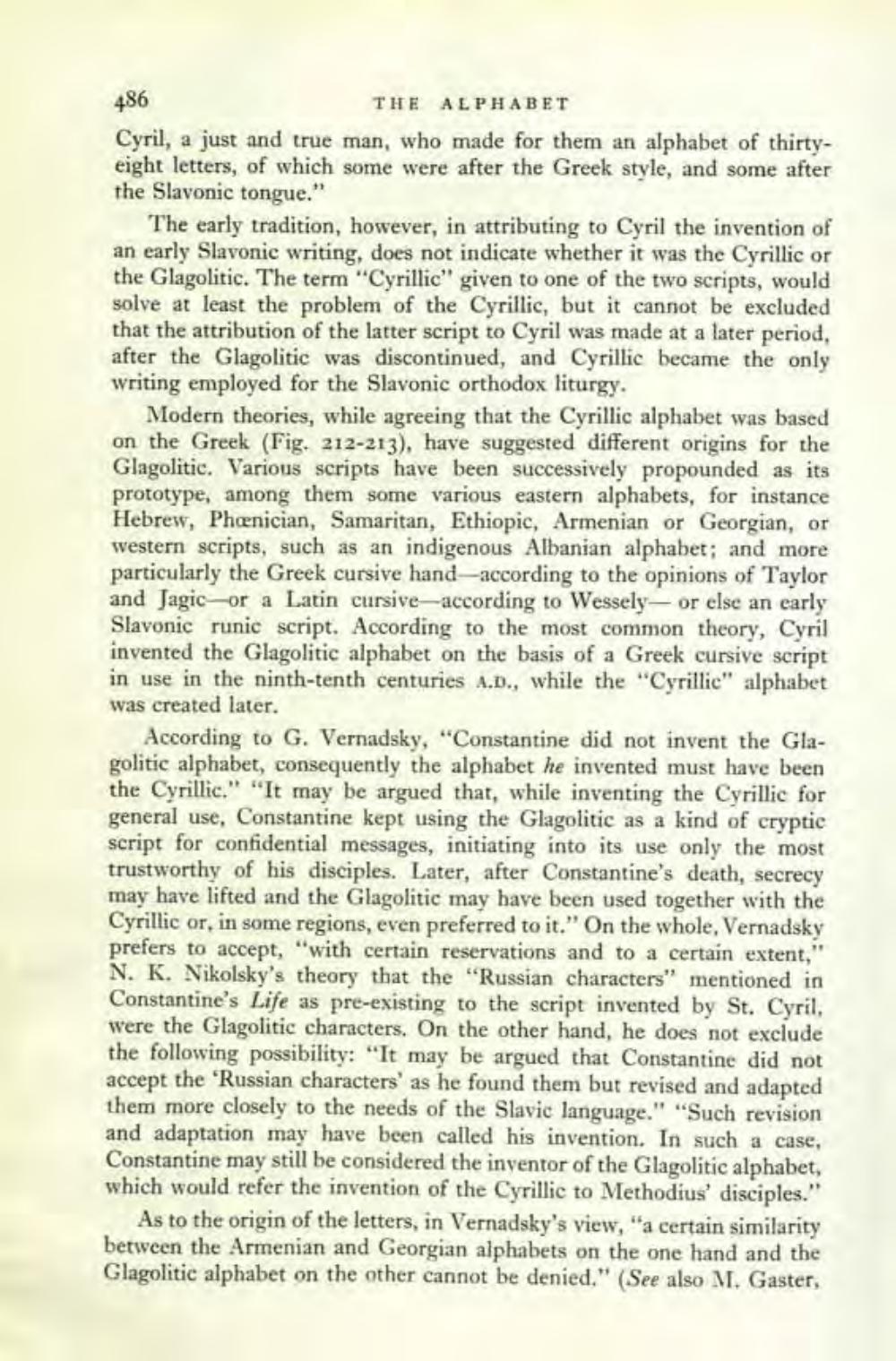________________
486
THE ALPHABET Cyril, a just and true man, who made for them an alphabet of thirtyeight letters, of which some were after the Greek style, and some after the Slavonic tongue."
The early tradition, however, in attributing to Cyril the invention of an early Slavonic writing, does not indicate whether it was the Cyrillic or the Glagolitic. The term "Cyrillic" given to one of the two scripts, would solve at least the problem of the Cyrillic, but it cannot be excluded that the attribution of the latter script to Cyril was made at a later period, after the Glagolitic was discontinued, and Cyrillic became the only writing employed for the Slavonic orthodox liturgy.
Modern theories, while agreeing that the Cyrillic alphabet was based on the Greek (Fig. 212-213), have suggested different origins for the Glagolitic. Various scripts have been successively propounded as its prototype, among them some various eastern alphabets, for instance Hebrew. Phænician, Samaritan, Ethiopic, Armenian or Georgian, or western scripts, such as an indigenous Albanian alphabet; and more particularly the Greek cursive hand-according to the opinions of Taylor and Jagic-or a Latin cursive-according to Wessely- or else an early Slavonic runic script. According to the most common theory, Cyril invented the Glagolitic alphabet on the basis of a Greek cursive script in use in the ninth-tenth centuries A.D., while the "Cyrillic" alphabet was created later.
According to G. Vernadsky, “Constantine did not invent the Glapolitic alphabet, consequently the alphabet he invented must have the Cyrillic." "It may be argued that, while inventing the Cyrillic for general use, Constantine kept using the Glagolitic as a kind of cryptic script for confidential messages, initiating into its use only the most trustworthy of his disciples. Later, after Constantine's death, secrecy may have lifted and the Glagolitic may have been used together with the Cyrillic or, in some regions, even preferred to it." On the whole, Vernadsky prefers to accept, "with certain reservations and to a certain extent." N. K. Nikolsky's theory that the "Russian characters" mentioned in Constantine's Life as pre-existing to the script invented by St. Cyril, were the Glagolitic characters. On the other hand, he does not exclude the following possibility: "It may be argued that Constantine did not accept the 'Russian characters' as he found them but revised and adapted them more closely to the needs of the Slavic language." "Such revision and adaptation may have been called his invention. In such a case, Constantine may still be considered the inventor of the Glagolitic alphabet, which would refer the invention of the Cyrillic to Methodius' disciples."
As to the origin of the letters, in Vernadsky's view, "a certain similarity between the Armenian and Georgian alphabets on the one hand and the Glagolitic alphabet on the other cannot be denied." (See also M. Gaster,




